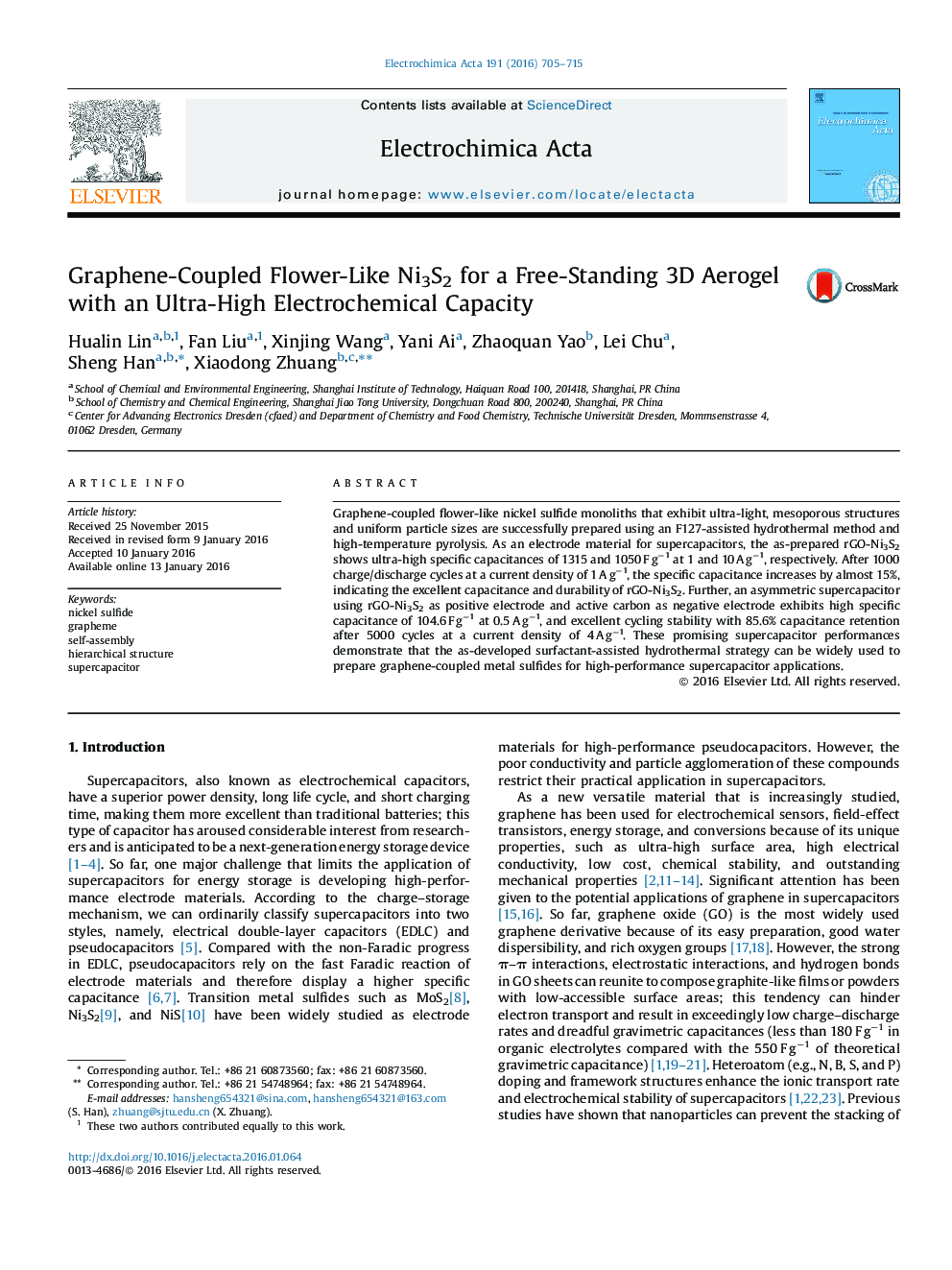| Article ID | Journal | Published Year | Pages | File Type |
|---|---|---|---|---|
| 6609271 | Electrochimica Acta | 2016 | 11 Pages |
Abstract
Graphene-coupled flower-like nickel sulfide monoliths that exhibit ultra-light, mesoporous structures and uniform particle sizes are successfully prepared using an F127-assisted hydrothermal method and high-temperature pyrolysis. As an electrode material for supercapacitors, the as-prepared rGO-Ni3S2 shows ultra-high specific capacitances of 1315 and 1050Â FÂ gâ1 at 1 and 10Â AÂ gâ1, respectively. After 1000 charge/discharge cycles at a current density of 1Â AÂ gâ1, the specific capacitance increases by almost 15%, indicating the excellent capacitance and durability of rGO-Ni3S2. Further, an asymmetric supercapacitor using rGO-Ni3S2 as positive electrode and active carbon as negative electrode exhibits high specific capacitance of 104.6Â FÂ gâ1 at 0.5Â AÂ gâ1, and excellent cycling stability with 85.6% capacitance retention after 5000 cycles at a current density of 4Â AÂ gâ1. These promising supercapacitor performances demonstrate that the as-developed surfactant-assisted hydrothermal strategy can be widely used to prepare graphene-coupled metal sulfides for high-performance supercapacitor applications.
Related Topics
Physical Sciences and Engineering
Chemical Engineering
Chemical Engineering (General)
Authors
Hualin Lin, Fan Liu, Xinjing Wang, Yani Ai, Zhaoquan Yao, Lei Chu, Sheng Han, Xiaodong Zhuang,
